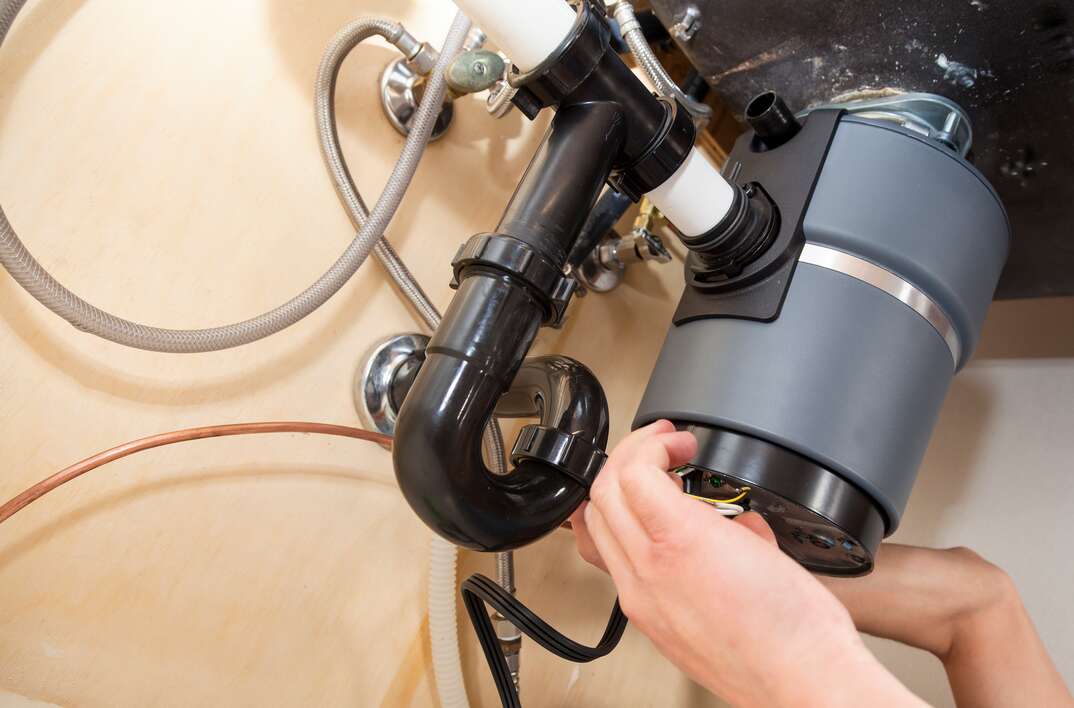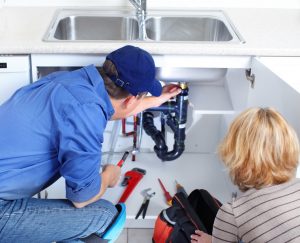Recommended Tips for Fixing a Leaking Waste Disposal Unit
Recommended Tips for Fixing a Leaking Waste Disposal Unit
Blog Article
We've unearthed this great article on How to fix a pretty consistent leak from my garbage disposal below on the internet and think it made perfect sense to write about it with you over here.

Garbage disposals are crucial cooking area devices that assist in disposing of food waste effectively. Nevertheless, a leaking waste disposal unit can be an aggravating and untidy issue to manage. Fortunately, numerous leaks can be repaired quickly with a few basic steps. In this short article, we will talk about how to repair a leaking garbage disposal effectively.
Introduction
Waste disposal unit are mounted under kitchen area sinks and are developed to shred food waste right into smaller pieces, permitting it to travel through the pipes system quickly. While these devices are usually trusted, leaks can occur with time as a result of deterioration, loosened connections, or damages to the system.
Step-by-Step Overview to Taking Care Of a Leaking Waste Disposal Unit
Turn Off the Power
Prior to attempting any kind of repair work, make certain that the power to the garbage disposal device is turned off to avoid the threat of electric shock.
Find the Leak
Determine the precise area of the leak and figure out the reason
Tighten Connections
Utilize a wrench to tighten up any kind of loosened connections between the disposal system and the plumbing system.
Replace Seals or Gaskets
If the leakage results from used seals or gaskets, remove the old components and replace them with new ones.
Patching Cracks or Holes
For cracks or holes in the disposal unit, use epoxy or a suitable patching product to secure the broken area.
Recognizing the Resource of the Leak
Prior to trying to fix a leaking garbage disposal, it is vital to recognize the source of the leak. This can typically be done through visual inspection or by conducting simple examinations.
Visual Examination
Check the waste disposal unit system thoroughly for any signs of water leak. Pay very close attention to areas around seals, gaskets, and link points.
Testing for Leakages
One method to test for leakages is by running water with the disposal unit and looking for any noticeable indications of leak.
Common Sources Of Leaks in Waste Disposals
Worn Seals and Gaskets
Seals and gaskets play a vital function in protecting against water from leaking out of the waste disposal unit. Over time, these elements can degrade, bring about leaks around the disposal unit.
Loose Connections
The connections in between the waste disposal unit and the plumbing system can become loose in time, triggering water to leak out during procedure.
Fractures or Openings in the Disposal System
Physical damage to the garbage disposal, such as splits or openings in the real estate, can likewise lead to leaks.
Tools and Materials Needed for Fixing a Dripping Waste Disposal Unit
Prior to beginning the repair work process, collect the essential devices and materials, including a screwdriver, flexible wrench, plumbing's putty, substitute seals or gaskets, and epoxy or patching material for fixing fractures or holes.
Examining the Waste Disposal Unit After Repair Work
Once the repair work is complete, evaluate the garbage disposal by running water via it to make sure that the leak has actually been dealt with.
Preventive Upkeep Tips to Prevent Future Leakages
To stop future leaks, it is vital to carry out normal maintenance on your garbage disposal. This consists of keeping it clean, staying clear of putting non-food products or difficult items down the disposal, and occasionally looking for leaks or other problems.
Verdict
In conclusion, repairing a dripping waste disposal unit is a reasonably uncomplicated process that can be completed with fundamental devices and products. By adhering to the actions detailed in this post and exercising precautionary upkeep, you can keep your waste disposal unit in good working problem and prevent costly repair work in the future.
HERE’S HOW TO FIX YOUR GARBAGE DISPOSAL
WHAT TO DO IF SOMETHING IS STUCK IN YOUR GARBAGE DISPOSAL
If the impeller won’t turn, there’s probably something stuck in the disposal. It could be a steak bone or peach pit, although plumbers report pulling all sorts of inappropriate objects out of disposals, such as bottle caps or aluminum foil. Make sure power to the disposal is off, and look inside to see if you can see the source of the jam.
Never stick your fingers in a disposal. Pull out anything you see with tongs or pliers.
If the disposal still won’t work, it may be time to call a plumber or consider buying a new disposal. GEM Plumbing & Heating is here for all of your garbage disposal needs.
WHAT TO DO IF YOUR GARBAGE DISPOSAL DRAIN IS CLOGGED
Take everything out from underneath your sink and put a bucket or other container under your disposal to catch any water that drains out. Disconnect your disposal from the power supply. If it’s plugged into a wall outlet, unplug it. If it’s hardwired into an electrical box, go to the electrical panel and turn off the breaker for the disposal. Pour ¼ cup of baking soda into the drain, followed by ½ cup of white vinegar. Give the solution a few minutes to fizz and do its work. Look into the disposal with a flashlight to see if you can see an object that might be causing the clog. If you see it, remove it using tongs or pliers. MORE TIPS ON DEALING WITH A CLOGGED GARBAGE DISPOSAL
Never use drain cleaner in a garbage disposal. It can damage the plastic parts inside the disposal. You can also be splashed with the caustic liquid while working to clear the clog. Beware! Never stick your fingers into a garbage disposal. Trust us — not a good idea. In many instances, your dishwasher drains through your garbage disposal. This allows the disposal to grind any large food particles that may be drained out of your dishwasher. There are some jurisdictions, however, where the plumbing code prohibits such a connection. WHAT TO DO WHEN YOUR DISHWASHER DRAINS THROUGH THE DISPOSAL
Run some water in the sink so your plunger has at least a ½-inch of water to create a seal and plunge vigorously up and down several times. You may need to repeat this several times. Run hot water down the drain to clear any residue that remains.

As a passionate person who reads on Why Is My Garbage Disposal Leaking From the Bottom?, I think sharing that excerpt was beneficial. For those who appreciated our post please do not forget to pass it around. Many thanks for taking the time to read it.
Schedule Now! Report this page